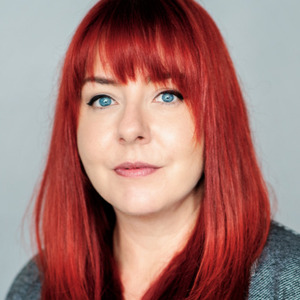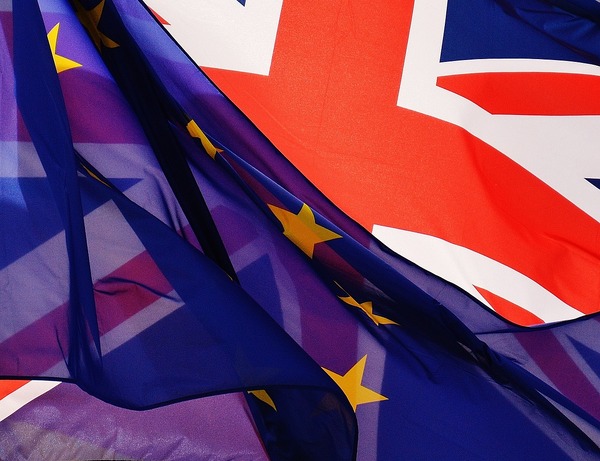The half way point: Marking SDG progress towards 2030
The United Nation’s Sustainable Development Goals (SDGs) were adopted in 2015, setting a blueprint for governments to accelerate action towards a better world by 2030. As we approach the halfway point, it’s time to reflect on the progress made so far and consider what’s still standing in the way of a shared just and equitable future.

The SDG Summit, taking place at the UN’s headquarters in New York later this month, represents an important milestone in the pursuit for global health and prosperity. The meeting – held alongside the 78th session of the UN General Assembly – marks the halfway point between 2015, when 193 member states of the UN agreed on the Agenda for Sustainable Development, and 2030, the target date for completion of the agenda’s 17 SDGs.
According to the UN, the summit is envisaged to be forward-looking and action-oriented, with the aim of accelerating international efforts to improve people’s lives and reinvigorating the sense of hope, optimism and enthusiasm that characterised the adoption of the SDGs and the 2030 Agenda. It’s hoped that a “concise, action-oriented political declaration” will be adopted at the event, giving heads of state and officials from across the world the opportunity to “set out concrete national commitments to SDG transformation”.
Muted enthusiasm
But in the run-up to the event – and following some negative research into the progress of the SDGs so far – there are significant question marks hanging over what these concrete commitments, if any, will look like. As recently as July, consensus remained elusive in government efforts to agree on the summit’s ultimate political declaration, while global development news platform Devex reported in May that there was discontent among member states regarding the UN’s upcoming calendar of events, and the negative impacts it may have on the value of the summit. However, it is not unusual for UN meetings to pull agreement out of the bag during the final closing session.
Moving backwards
Despite the UN’s efforts to fuse the upcoming summit with a sense of reinvigorated hope, research on SDG progress paints a disheartening picture.
The Sustainable Development Report 2023, produced by the Sustainable Development Solutions Network (SDSN), shows that 64% of countries demonstrated limited-to-no progress on individual SDG targets so far, and 15% have even gone backwards.
The report reveals the number of people living in extreme poverty is higher than it was four years ago. Hunger has also increased and is now back at 2005 levels, and gender equality is estimated to be some 300 years away. With these trends, only 30% of all countries will eradicate poverty (SDG 1) by 2030. Meanwhile, inequalities are at a record high – and growing – it is calculated that 26 of the world’s richest people have the same wealth as half of the world’s population. When it comes to environmental progress, we’ve seen only “limited” improvements in responsible consumption and production (SDG 12; see box below), climate action (SDG 13), life below water (SDG 14), and life on land (SDG 15).
“Halfway to the deadline for the 2030 Agenda, we are leaving more than half the world behind. We have stalled or gone into reverse on more than 30% of the SDGs,” said UN Secretary-General António Guterres. “Unless we act now, the 2030 Agenda will become an epitaph for a world that might have been.”
Unless we act now, the 2030 Agenda will become an epitaph for a world that might have been.
It’s not entirely bad news, though. The UN’s SDG Report 2023 shows there have been some pockets of improvement. Chiefly, 800m people have been connected to electricity between 2015 and 2021, 146 countries have already met or are on track to meet the under-5 mortality target, and effective HIV treatment has cut global AIDS-related deaths by 52% since 2010.
A UN press release issued in July also points to a number of national successes. The Kingdom of Saudi Arabia, for example, has made significant progress in creating jobs for women, with female workers rising from 19.4% of the total in 2015 to 36% in 2022. In the Central African Republic, meanwhile, the number of mobile phone users increased from 35.6% in 2018 to 56.7% in 2022.

What’s hindering progress?
Undoubtedly, Covid played a catastrophic role in the advancement of SDGs across the board. Research demonstrates the impact the pandemic had – and continues to have – on healthcare, economies and depleted public resources.
Data from the World Bank, published in World Development, suggests that following Covid, resource-stretched nations haven’t reported accurately on their SDG progress. Only 47% of data required to track progress on gender equality (SDG5) is currently available, rendering women and girls effectively invisible, as well as slowing down the pace of progress, according to UN Women.
What is consistently clear, however, is the marked divide in progress between rich and poor countries – an issue that existed long before Covid, but which has been exacerbated in its aftermath.
According to the SDSN report, there is a real risk that the gap in SDG outcomes between high-income countries (HICs) and low-income countries (LICs) will be larger in 2030 than it was in 2015. Right now, 37 out of the 69 world’s poorest countries are in debt distress or at high risk, hampering their ability to accelerate action on the SDGs. It’s no surprise then, that Lebanon, Yemen, Papua New Guinea, Venezuela, and Myanmar are the five countries with “the largest number of SDG targets moving in the wrong direction”.
Throughout the Covid pandemic and war on Ukraine, HICs clearly demonstrated their capabilities in mobilising vast financial resources, but it seems they’re not prepared to do the same for global sustainable development, despite previous commitments and urgency regarding climate financing. SDSN’s report concludes with a call to UN member states to support a “comprehensive reform of global financial architecture”, and to ramp up financing flows by at least $500bn by 2025 to close the gap facing nations trapped in a poverty cycle that prevents SDG action.
Differing priorities
Underpinning these financial obstacles is what some academics have referred to as the risk of “common vocabulary”. In a paper from the Royal Swedish Academy of Sciences (RSAS) which explores the SDGs at their halfway point, the authors note that one of the main strengths of the SDGs is that “they provide a globally shared vocabulary that can connect different actors, sectors, and levels of society from local to global”.
(The goals) provide a globally shared vocabulary that can connect different actors, sectors, and levels of society from local to global
However, they say, there is a risk that elements “remain unattended or overlooked because of this common vocabulary”. In other words, not pulling your weight is easier in a group situation, because someone else can pick up the slack. This of course only exacerbates the divide between HICs – which are predominantly concerned with their own wellbeing – and LICs, which lack the means to contribute to the vocabulary in the first place.
According to the authors, there are comprehensive national differences in how the SDGs are used in national strategies, national indicator systems and so on, and more research into the implications of these differences is needed to better understand how they will impact global progress.
The bigger picture
Another key issue is a tendency for nations to get bogged down in the specific details of each of the SDGs, whereas – and as is demonstrated by references to the “interlinked goals” throughout official SDG documentation – a more integrated approach is needed.
As the RSAS authors note, “The success of SDG implementation is not so much to be identified from the actions aimed at implementing individual SDGs or targets, but more from integrative actions purposefully, or incidentally, directing attention to win–win solutions and avoidance of trade-offs between SDGs”.
This again represents a key difference in approaches between HICs and LICs. Even on a macro level, corporate ESG reports are frequently peppered with references to how specific sustainability initiatives contribute to specific goals, without any real consideration for the ‘bigger picture’.
The need for an integrated approach is nothing new, though. Back in 2017, The Economist Intelligence Unit, in partnership with the United Nations Foundation, published a whitepaper calling for a holistic approach that centres partnership and collaboration to “capitalise on the intertwined nature of the world’s social and environmental challenges”. The paper’s authors did, however, acknowledge that this would be difficult to achieve.
Focus on SDG 12SDG 12, on sustainable consumption and production, is a goal that many people can relate and contribute to. In an effort to accelerate the shift towards sustainable consumption and production patterns, the UN adopted a 10-Year Framework of Programs on Sustainable Consumption and Production (10YFP) in 2012, to bring together governments, businesses, and civil society.
At the moment that are six programmes under the 10YFP: public procurement; consumer information; lifestyles and education; buildings and construction; tourism; and food systems. Also, new themes surface, for example, there is a growing body of work on how emerging digital technologies, such as AI, IoT, and blockchain, can be used to accelerate the shift to a circular economy.
In 2021, the UN General Assembly extended the 10YFP until 2030 and recognised that more concerted efforts were needed to address environmental challenges and promote sustainable development. The programme is now guided by a Global Strategy for Sustainable Consumption and Production (2022-2030). This states that “small-scale, isolated, or fragmented actions, even in great numbers, will not be enough. To achieve our objectives, we must collectively and strategically work towards the systemic transformations needed to change the course of history.”
The Strategy is built on four pillars that aim to guide collective and individual actions to accelerate this shift by 2030. They are to:
Looking beyond 2030, the role and mandate of the 10YFP in supporting SDG12 is yet to be determined. According to the UN, it hopes patterns of sustainable consumption and production across society will have been sufficiently embedded by 2030 – as per the SDG goal timeline - that there is a significantly reduced requirement for the work we are currently engaged in, and that resources can be focused on sustaining and cementing globally embedded SCP patterns. |
Looking ahead
Despite these immense challenges, however, all is not yet lost. “Giving up on the SDGs or extending the deadline to meet them is not an option,” the UN Department of Economic and Social Affairs (Desa) writes in a guest post on the International Institute for Sustainable Development (IISD) blog. “There is a narrowing window of opportunity over the next seven years to redouble our efforts to eliminate poverty and hunger, advance gender equality and overcome the triple planetary crisis. But it is not too late to turn things around.”
Giving up on the SDGs or extending the deadline to meet them is not an option
Indeed, while UN Economic and Social Council President Lachezara Stoeva acknowledges that we’ve already lost seven years of SDG progress, we still have seven years to go. “But countries must integrate the SDGs into their national development plans, policies and strategies,” she says. “A strong push must be made to accelerate progress, and aligning national priorities with the SDGs is paramount to ensure a coherent and comprehensive approach to sustainable development.”
The task at hand is significant. But if the delegates and heads of state attending the SDG Summit this September can keep in their hearts the hope and optimism that was in abundance when the goals were first laid out seven years ago, maybe progress can turn a corner.
Find out more
|
Activate employees
Find out how OckiPro membership engages employees to deliver sustainability impact.
Get Involved
There are many ways to get involved with Ocki and its community. To find out more, click the button below




